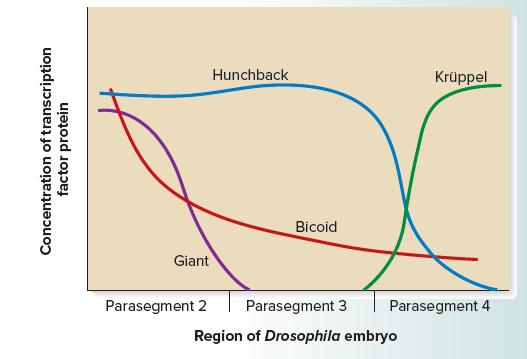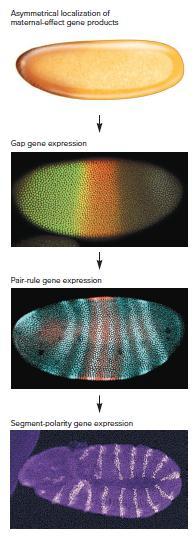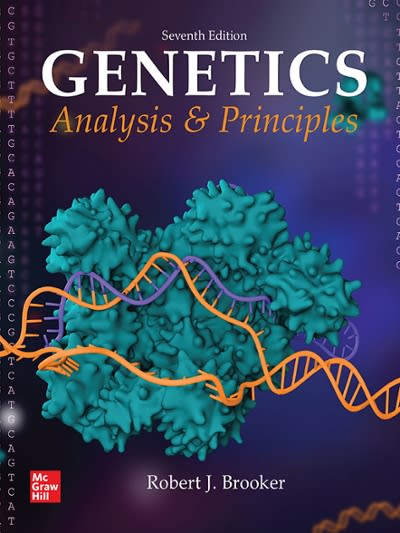An intriguing question in developmental genetics is, how can a particular gene, such as even-skipped, be expressed
Question:
An intriguing question in developmental genetics is, how can a particular gene, such as even-skipped, be expressed in the alternating banding pattern seen in step 3 in Figure 26.11? Another way of asking this question is, how is the positional information within the broad bands due to the gap genes able to be deciphered in a way that causes the pair-rule genes to be expressed in this alternating banding pattern? The answer lies in a complex mechanism of genetic regulation.
Certain pair-rule genes have several stripe-specific enhancers that are controlled by multiple transcription factors. A stripe-specific enhancer is typically a short segment of DNA, 300–500 bp in length, that contains binding sequences recognized by several different transcription factors. The name stripe-specific enhancer is a bit misleading because this DNA segment is a regulatory region that contains both enhancer and silencer elements.
In 1992, Michael Levine and his colleagues investigated stripespecific enhancers located near the promoter of the even-skipped gene. A segment of DNA, termed the stripe 2 enhancer, controls the expression of the even-skipped gene; this enhancer is responsible for the expression of the even-skipped gene in stripe 2, which corresponds to parasegment 3 of the embryo. The stripe 2 enhancer is a segment of DNA that contains binding sites for four transcription factors that are the products of the Krüppel, bicoid, hunchback, and giant genes. The Hunchback and Bicoid transcription factors bind to this enhancer and activate the transcription of the even-skipped gene.
In contrast, the transcription factors encoded by the Krüppel and giant genes bind to the stripe 2 enhancer and repress transcription of the even-skipped gene. The figure below describes the concentrations of these four transcription factor proteins in the region of parasegments 2, 3, and 4.Parasegment 2 corresponds to stripe 2 in the Drosophila embryo.

To study stripe-specific enhancers, researchers have constructed artificial genes in which the enhancer is linked to a reporter gene, whose expression is easy to detect. The following photo shows the results of an experiment in which an artificial gene was made by putting the stripe 2 enhancer next to the gene that encodes β-galactosidase. This artificial gene was introduced into Drosophila, and then embryos containing this gene were analyzed for β-galactosidase activity. If a region of the embryo is expressing β-galactosidase, the region will stain darkly because β-galactosidase converts a colorless compound into a dark blue compound.

Explain these results.
Figure 26.11:

Step by Step Answer:






